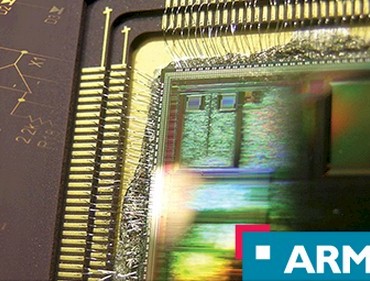ARM Raises Server Chip Standard

A lot of things will have to come together before an ecosystem of processors and system makers coalesces around ARM processors. First, companies have to actually get 64-bit chips into the field, as the collapse of ARM server chip startup Calxeda so aptly demonstrates. ARM chips are the CPUs of choice for smartphones, tablets, and other handheld consumer devices, but the lack of compatibility between myriad devices drives operating system makers and, more significantly, application developers to distraction. No one in Server Land wants to have to recompile their ARM applications as they deploy different 64-bit ARM chips inside their datacenters.
And thus, ARM Holdings has worked with prospective chip, system, and operating system makers to cook up the Server Base System Architecture specification, and as Ian Drew, chief marketing officer at ARM Holdings explained in his keynote address at the Open Compute Summit in San Jose, this is a hardware specification, which ARM chip makers will adhere to and which covers how the firmware, operating system kernel, the rest of the operating system, and hypervisors talk to all of the components on an ARM-based system-on-chip. The goal is to allow for innovation in the ARM chip ecosystem while maintaining compatibility for applications.
"The ARM business model is around partnership, and a few months ago, we got a group of people together and we put that challenge to them," explained Drew. "How do you drive innovation and differentiation and still keep the standards in place so the OEMs and the software community can succeed? You know, when you get a group of people together, you quite often have to bash a few heads. And so we bashed a few heads and we had calls and then we met again and we targeted what was really important."
The idea is to support multiple memory controllers, timers, accelerators, and other functions outside of the ARMv8-A series of cores that are being used as the basis for many impending ARM server chips. Some vendors have a full ARMv8 license and can do a greater level of customization, but they similarly want to have application compatibility.
"The ecosystem can innovate in area that are important for the ecosystem, not at the microcontroller level or SoC level," Drew explained. "This is a hardware spec for OS and firmware developers. It covers firmware and operating systems, but it is not a software spec. It is a hardware specification that was written by hardware guys and software guys together with the thought that a new datacenter revolution is happening."
Basically, the SBSA is a veneer over the ARMv8-A chip that provides a consistent way of telling an operating system what elements are on the ARM system-on-chip and a consistent way to talk to these elements, ranging from memory and I/O controllers, to virtualization electronics for compute, memory, and I/O, and to accelerators such as GPUs or encryption engines.
This balancing act between compelling standardization and offering room to differentiate is not an easy one, but it must be done. Intel's "Avoton" C2000 Atom chips for servers are probably going to be as good as anything the ARM collective can deliver in 2014 in terms of raw performance and performance per watt, and Intel has "Denverton" in the pipeline using 14 nanometer processes later this year. Whatever thermal advantages the ARM architecture might have when they are at chip fabrication process parity with Intel will evaporate when Intel has a two process node advantage over ARM chips fabbed in 28 nanometer processes. The ability to create custom designs and yet be compatible across the ecosystem is going to be necessary. Getting on a faster process roadmap would help, too, but it seems unlikely that Intel will make ARM chips for its competitors or that Taiwan Semiconductor Manufacturing Corp, the foundry of choice for a lot of CPU and GPU chips these days, will be able to catch up any time soon. The other differentiation that ARM has in its favor, besides a history of customization and precise tuning of chips for specific workloads is an ecosystem of software developers who are very familiar with its architecture. Intel, of course, has the same benefit for its X86 chips.
The Linaro Linux-on-ARM development group as well as Canonical, Citrix Systems, Microsoft, Red Hat, and SUSE Linux had input into the SBSA spec, as did system makers Dell and Hewlett-Packard. ARM server chip makers Applied Micro, AMD, Broadcom, Cavium, and Texas Instruments all contributed to the spec as well. Calxeda is absent by virtue of having been shut down in September, and it is noteworthy that Marvell, which actually sells 32-bit and 40-bit ARM chips that are deployed in systems today, is not on the list of SBSA supporters. Neither is Samsung, which is widely believed to be working on its own ARM server chip but which has been mum on the subject.
The interesting bit up there in that vendor list is Microsoft. The maker of Windows Server has never said it will not create an ARM version of its server operating system, but it has never said that it will, either. It looks like Microsoft might be hedging its bets – and quite possibly for its own datacenters as well as yours.











